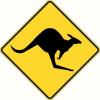Hi. I have a Grizzly G0623X sliding table saw. I use the slider side 90% of the time, and I've got it pretty well dialed in thinks to the folks on this forum and YouTube. One of the things mentioned by a variety of folks is that the sliding table should be planar to but ~0.010" ABOVE the table saw table.
Can someone explain why? And more importantly, how do you rip thin pieces where some sits on the slider without it "un-squaring" the cut?
As I said, I use the slider side 90% of the time and use a "Fritz and Franz" jig for ripping when the board to rip is wide enough to fit nicely on the slider and shorter than the slider's range of motion. This works perfectly. However, tonight I had to rip some pieces that were too narrow for "Fritz and Franz." So I ripped them the normal way, along the rip fence with my Micro Jig. My test cut was perfect, EXCEPT that because about 1/2" was sitting ~0.010" higher on the slider side, I ended up with a piece that wasn't square.
This wouldn't have been an issue if the slider were level with the table, but again, the recommendations seem to be the slider should be just slightly above the table.
So, if the recommendations are correct, how do you rip conventionally on a sliding table saw in situations where your off-cut extends onto the slider?
Thanks!




 Reply With Quote
Reply With Quote
 )
)





